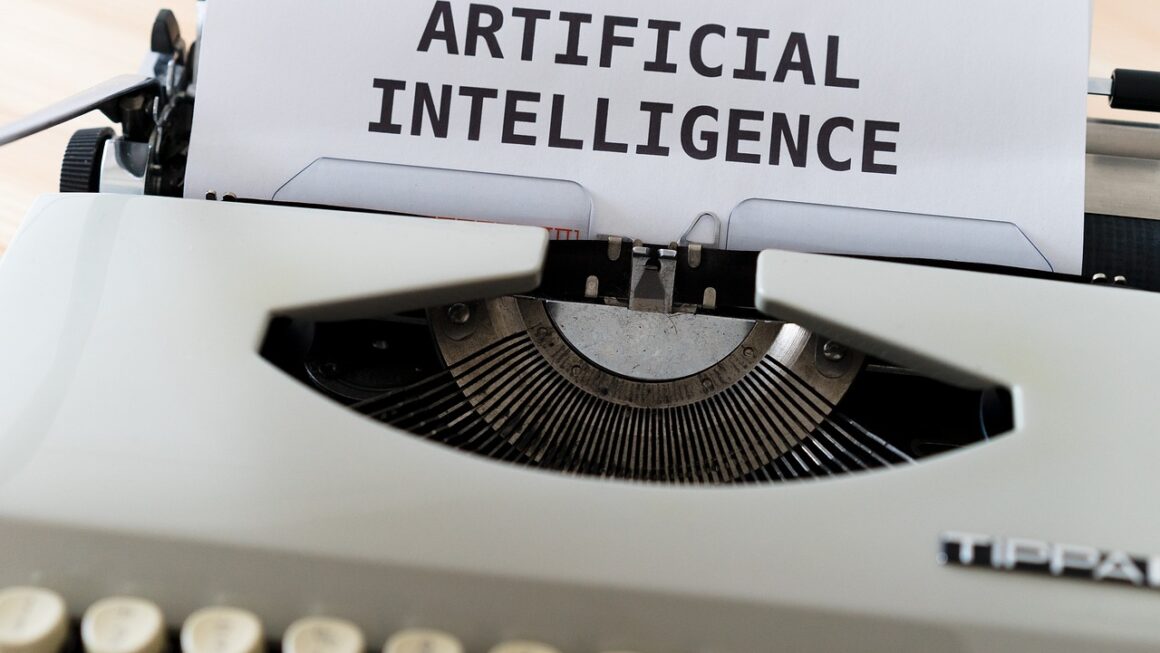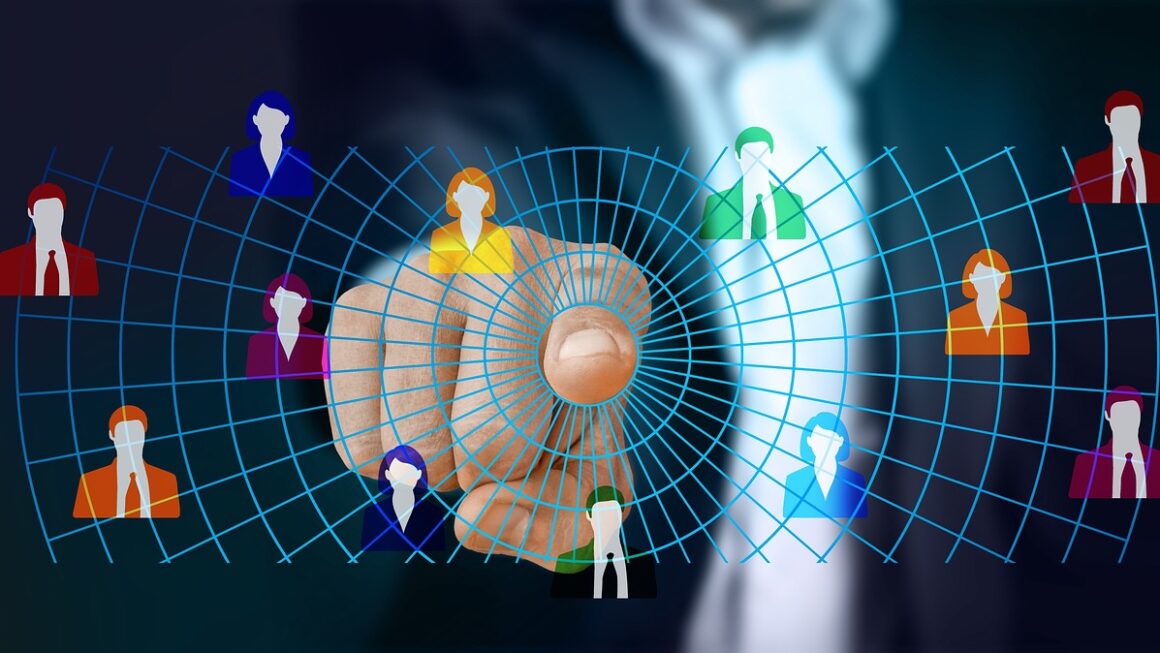Artificial intelligence is rapidly transforming our world, moving from science fiction to everyday reality. With each passing month, we witness remarkable AI breakthroughs that are reshaping industries, improving our lives, and pushing the boundaries of what’s possible. This blog post delves into some of the most exciting recent advancements in AI, exploring their potential impact and offering insights into the future of this transformative technology.
Generative AI: Creating New Realities
Generative AI is revolutionizing content creation, design, and even scientific discovery. This branch of AI focuses on training models to generate new, original content, mimicking the style and characteristics of the data they were trained on.
Text Generation and Natural Language Processing (NLP)
- Breakthroughs: Models like GPT-4, LaMDA, and PaLM are capable of generating human-quality text, translating languages, and engaging in complex conversations. They excel at tasks like:
Content Creation: Writing articles, blog posts, marketing copy, and even entire books. Jasper.ai and Copy.ai are examples of platforms leveraging this.
Chatbots and Virtual Assistants: Powering more natural and helpful customer service interactions. Think of improvements in Siri, Alexa, and Google Assistant.
Code Generation: Assisting developers by automatically generating code snippets or even entire programs. GitHub Copilot is a prominent example.
- Practical Examples:
A marketing team can use GPT-4 to generate multiple variations of ad copy for A/B testing, saving time and resources.
A customer service department can implement a chatbot powered by LaMDA to handle common customer inquiries, freeing up human agents to focus on more complex issues.
Researchers are using AI to accelerate scientific discovery by generating hypotheses and designing experiments.
Image and Video Generation
- Breakthroughs: Tools like DALL-E 3, Midjourney, and Stable Diffusion can create stunningly realistic images and videos from text prompts.
- Applications:
Art and Design: Enabling artists and designers to explore new creative possibilities.
Marketing and Advertising: Generating eye-catching visuals for campaigns.
Entertainment: Creating special effects and animations for movies and games.
- Practical Examples:
A graphic designer can use DALL-E 3 to quickly generate multiple design concepts based on a client’s brief.
A small business owner can use Midjourney to create professional-looking images for their website and social media, without the need for expensive stock photos.
Film studios are increasingly using AI-generated visuals to reduce costs and accelerate production timelines.
AI in Healthcare: Revolutionizing Diagnosis and Treatment
AI is transforming the healthcare industry, offering the potential to improve diagnosis, treatment, and patient care.
Medical Image Analysis
- Breakthroughs: AI algorithms can analyze medical images such as X-rays, MRIs, and CT scans with remarkable accuracy, often surpassing human radiologists in detecting subtle anomalies.
- Benefits:
Early Detection: Identifying diseases like cancer at earlier stages, improving patient outcomes. For example, AI is being used to detect breast cancer in mammograms with higher accuracy.
Reduced Error Rates: Minimizing the risk of human error in image interpretation.
Increased Efficiency: Speeding up the diagnostic process, allowing doctors to focus on patient care.
- Practical Examples:
AI algorithms are being used to analyze retinal scans to detect diabetic retinopathy, a leading cause of blindness.
AI is helping pathologists analyze tissue samples to identify cancerous cells with greater precision.
Drug Discovery and Development
- Breakthroughs: AI is accelerating the drug discovery process by identifying promising drug candidates, predicting their effectiveness, and optimizing clinical trial design.
- Examples:
Identifying Drug Targets: AI can analyze vast amounts of biological data to identify potential drug targets for various diseases.
Predicting Drug Interactions: AI can predict how different drugs will interact with each other, helping to avoid adverse drug reactions.
Designing Clinical Trials: AI can optimize clinical trial design to improve the efficiency and effectiveness of drug development.
- Companies in the Space: Insitro, Recursion Pharmaceuticals, and Exscientia are leading companies using AI for drug discovery.
Autonomous Systems: AI-Powered Automation
Autonomous systems, powered by AI, are becoming increasingly sophisticated, capable of performing tasks without human intervention.
Self-Driving Cars
- Breakthroughs: Significant progress has been made in the development of self-driving cars, with companies like Waymo and Tesla leading the way.
- Challenges:
Safety: Ensuring the safety of autonomous vehicles in all driving conditions remains a major challenge.
Regulations: Developing clear and consistent regulations for self-driving cars is essential.
Public Acceptance: Gaining public trust in the safety and reliability of autonomous vehicles.
- Current Status: While fully autonomous vehicles are not yet widely available, many cars already have advanced driver-assistance systems (ADAS) that use AI to provide features like lane keeping assist, adaptive cruise control, and automatic emergency braking.
Robotics and Automation
- Breakthroughs: AI-powered robots are being used in a variety of industries, from manufacturing to logistics to healthcare.
- Applications:
Manufacturing: Performing repetitive tasks with greater speed and precision.
Warehousing: Automating the sorting and packing of goods.
Healthcare: Assisting surgeons in complex procedures and providing companionship to elderly patients.
- Practical Examples:
Amazon uses AI-powered robots in its warehouses to fulfill orders more efficiently.
Surgical robots are being used to perform minimally invasive surgeries with greater precision and control.
Companion robots are being developed to provide social interaction and emotional support to elderly people.
Ethical Considerations and Responsible AI
As AI becomes more powerful, it’s crucial to address the ethical implications and ensure responsible development and deployment.
Bias and Fairness
- Challenge: AI algorithms can perpetuate and amplify existing biases in data, leading to unfair or discriminatory outcomes.
- Solutions:
Data Auditing: Carefully auditing training data to identify and mitigate biases.
Fairness Metrics: Using fairness metrics to evaluate the performance of AI algorithms across different demographic groups.
Explainable AI (XAI): Developing AI models that are transparent and explainable, allowing users to understand how decisions are made.
- Example: Ensuring that facial recognition technology performs equally well across all skin tones and ethnicities.
Privacy and Security
- Challenge: AI systems often require access to large amounts of personal data, raising concerns about privacy and security.
- Solutions:
Data Anonymization: Anonymizing data to protect individual privacy.
Differential Privacy: Adding noise to data to prevent the identification of individuals.
* Secure AI: Developing AI models that are resistant to attacks and protect sensitive data.
- Practical Examples: Implementing strong security measures to prevent unauthorized access to AI models and data. Employing techniques like federated learning, where models are trained on decentralized data without sharing raw information.
Conclusion
The AI breakthroughs we’ve discussed represent just a glimpse of the transformative potential of this technology. From generating new realities with generative AI to revolutionizing healthcare and automating complex tasks, AI is poised to reshape our world in profound ways. As AI continues to evolve, it’s crucial to address the ethical considerations and ensure responsible development and deployment. By embracing a future-focused approach, we can harness the power of AI to create a better world for all.




